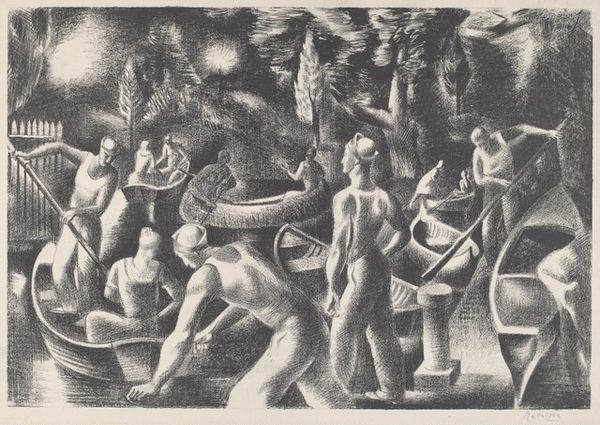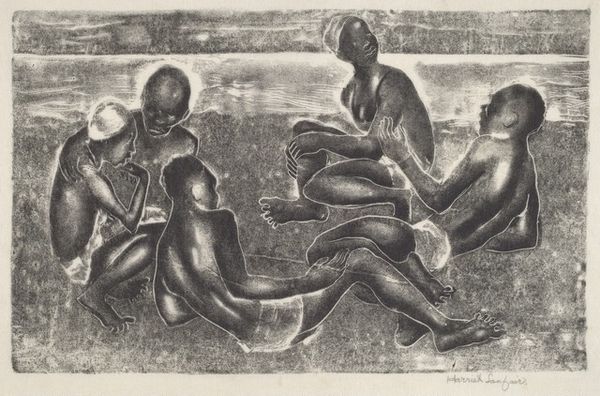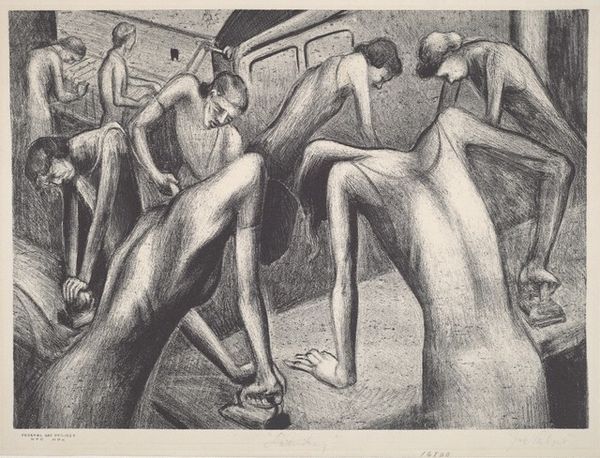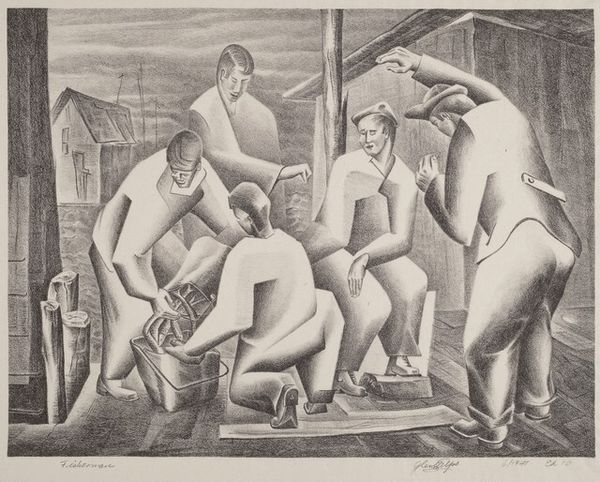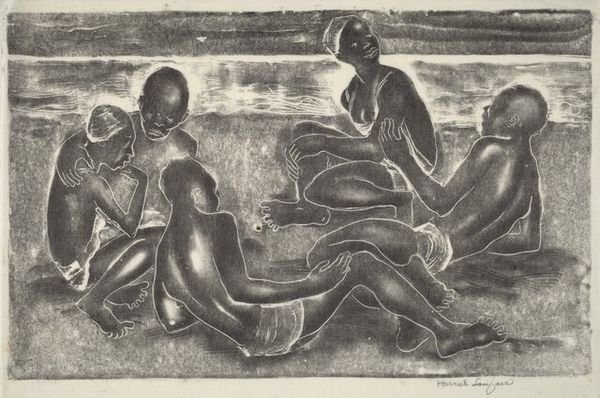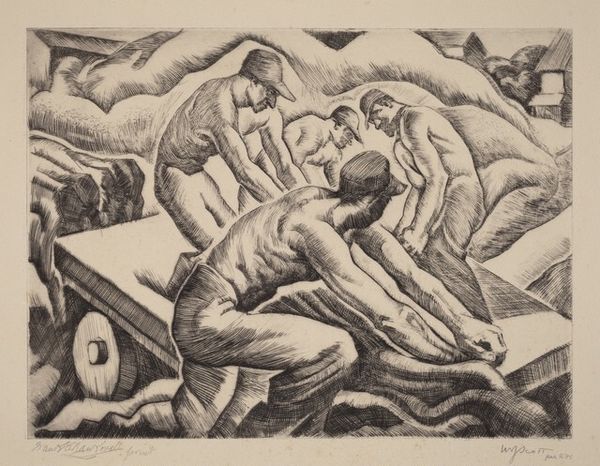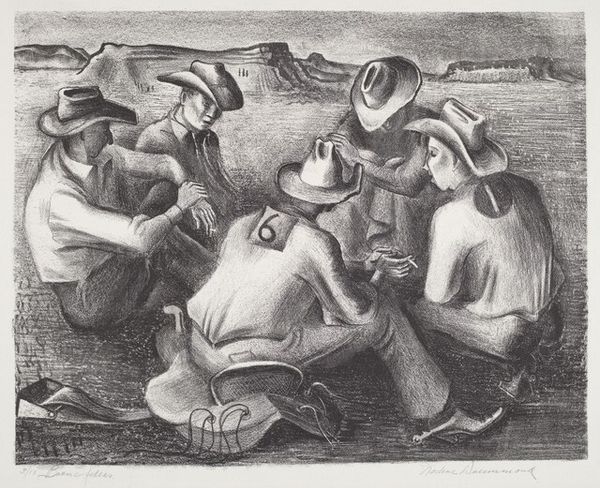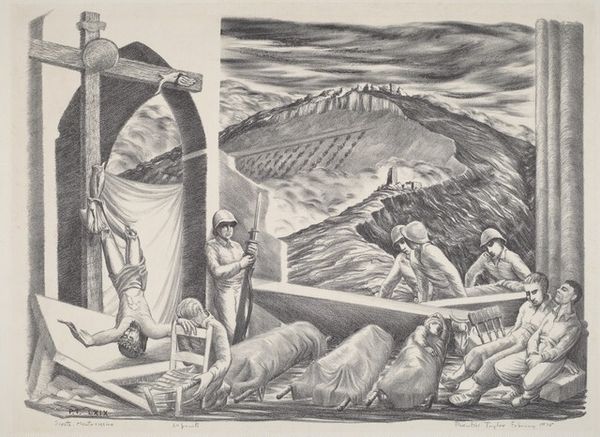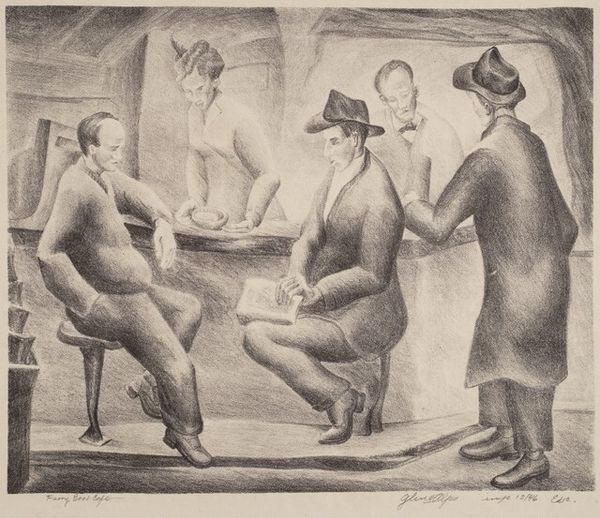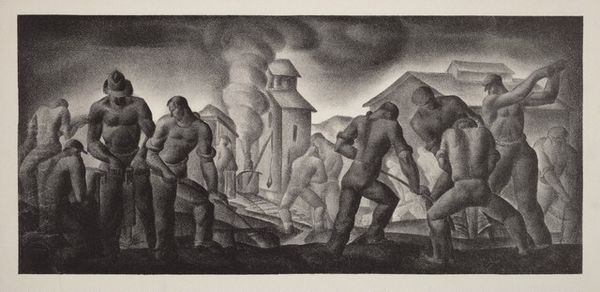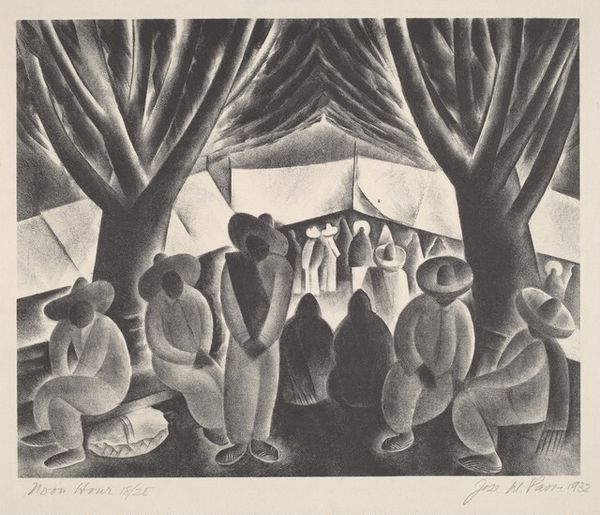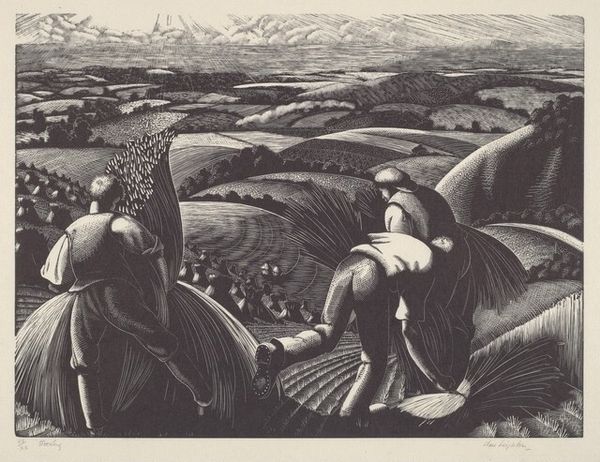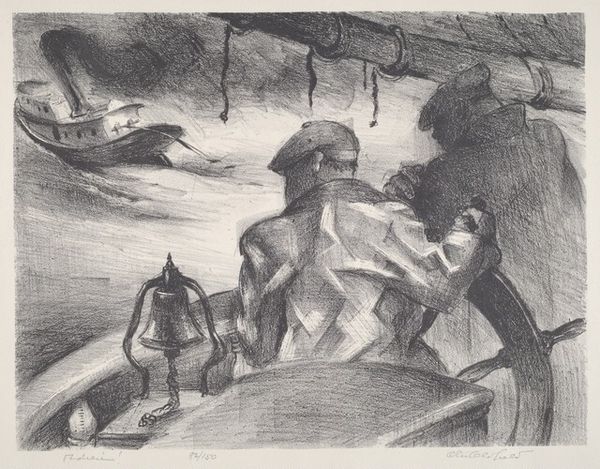
drawing, lithograph, print
#
pencil drawn
#
drawing
#
lithograph
# print
#
landscape
#
pencil drawing
#
genre-painting
#
realism
Dimensions: image: 227 x 253 mm sheet: 284 x 328 mm
Copyright: National Gallery of Art: CC0 1.0
Curator: The immediate impression I get from Frank Cassara's "Wheat Harvest" is one of robust labor, a classical composition rendered in muted tones. Editor: Indeed. Executed as a lithograph around 1937-38, this print embodies the Regionalist movement’s focus on depicting rural American life. The materials—the lithographic stone and printing press—allowed for relatively widespread distribution, bringing scenes of agricultural work to a broader audience. Curator: Look at the figure with the raised arm; it's almost a directive, a subtle compositional choice that injects tension into the bucolic setting. The textures are compelling as well; how did he achieve this using lithography? Editor: It is remarkable, isn’t it? Through the labor-intensive process of drawing on stone, Cassara controls the density of marks. Each individual stalk of wheat and furrow of earth represents direct manipulation, highlighting the artist’s own labor echoing the harvest portrayed. Curator: I think you are right, it draws the viewer into an empathetic view with workers, in stark relief to many academic paintings of the time that glossed over real material realities. And beyond technique, I find it fascinating how he frames a sense of collective action within the picture, too. Each figure performs an indispensable task that culminates in the broader wheat harvest—their shared humanity in action. Editor: Right. He really captured the sense of community labor. We see individual laborers defined in relation to production, reflecting an interest in depicting labor that emerged as both subject and mode of making within American art and society in this period. The print itself functions, similarly to how Cassara’s workers labored collectively towards shared production—in its reproducible dissemination across society. Curator: A compelling reading—both an exploration into shared labor through harvesting but an argument of art for all in sharing a material form through a readily reproducible medium. Editor: Yes. This gives a far richer perspective to "Wheat Harvest" now. Thank you for offering those ideas, a way into which materiality reflects societal norms.
Comments
No comments
Be the first to comment and join the conversation on the ultimate creative platform.
